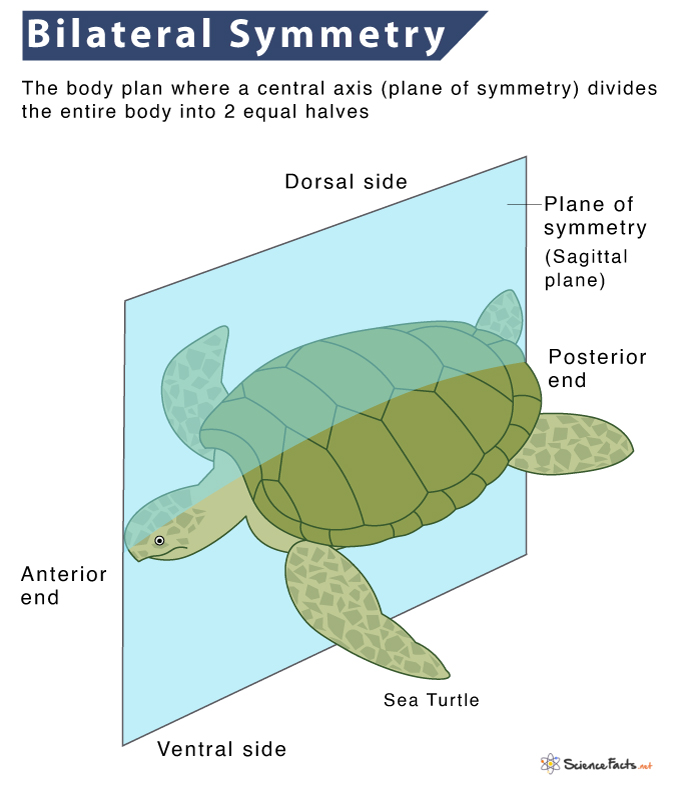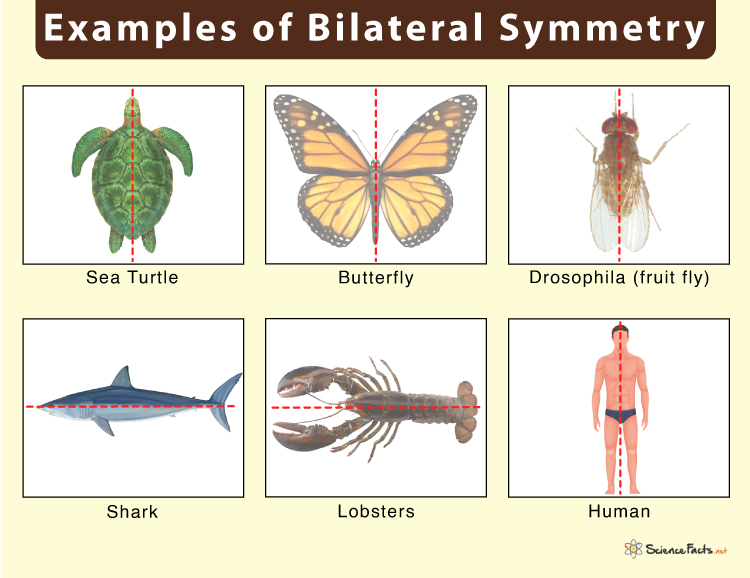What is Bilateral Symmetry
Examples of Bilateral Symmetry
Evolution of Bilateral Symmetry
Characteristics of Animals
Advantages of Bilateral Symmetry
However, the internal body parts such as organs may not be symmetric. Higher organisms, like plants and animals, and lower invertebrates and microorganisms, like fungi and bacteria, all exhibit bilateral symmetry. The term ‘bilateral’ is obtained from Latin ‘bis’ meaning ‘two’ and ‘latus’ meaning side. However, the word ‘symmetry’ came from Greek ‘syn’ means ‘together’ and ‘metron’ means ‘meter’. Plants also developed bilateral symmetry but much later than animals.
have only one line of symmetryhave a head (anterior) and tail (posterior) regionhave a top (dorsal) and bottom (ventral) sidehave distinct left and right sidesmainly have a complex brain, which is part of a developed nervous system and may even have right and left sidesmove more quickly than animals with radially symmetrical body planand have better eyesight and hearing than those having radial symmetry
Coordinating Body Parts
It helps the brain recognize and coordinate different body parts, making visual perception easier and causing better movement coordination.
Forming Body Polarity
It makes the body polar, where materials enter or leave from different directions instead of all happening through the same end.
Maintaining Body Balance
It is also essential to maintain body balance. Thus, it helps in the directional movement forward in a streamlined manner. For example, the two legs being equal in length helps us walk, which would have been impossible if they were of different lengths.
Escaping Predators
It helps animals evolve and move faster than their ancestors, allowing them to find food or escape predators.
Protection
Marine or freshwater organisms such as bivalve mollusks have shells consisting of two hinged, bilaterally symmetrical halves. The sagittal plane lies along the hinge, which allows the organism to firmly close its shell and protect the soft inner parts of the body. Although a bilateral symmetry provides several benefits to an organism, its most significant disadvantage is that it reduces diversity in the structure and thus reduces the chance of evolution and adaptability.

